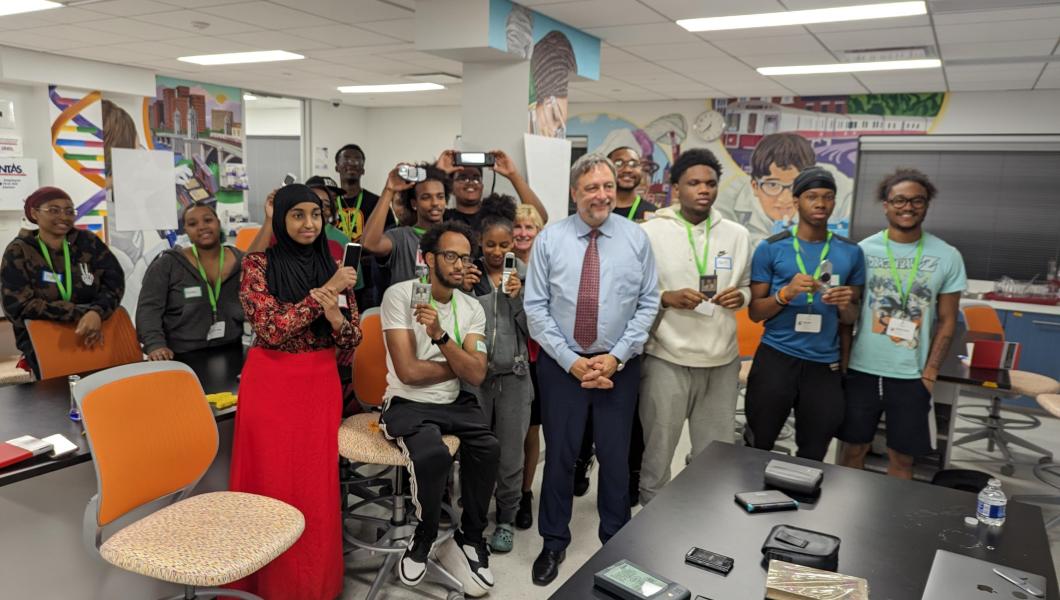NJIT Physics Professor Philip Goode Named American Astronomical Society Fellow

Philip R. Goode, distinguished research professor of physics at NJIT’s Center for Solar-Terrestrial Research (CSTR), has been named 2021 Fellow of the American Astronomical Society (AAS) — the leading organization of professional astronomers in North America established in 1899.
The fellowship is annually bestowed upon select AAS members for extraordinary contributions toward enhancing and sharing humanity’s scientific understanding of the universe, specifically through “original research and publication, innovative contributions to astronomical techniques or instrumentation, significant contributions to education and public outreach, and noteworthy service to astronomy and to the Society itself.”
Goode was named for his “pioneering work in helioseismology and for leadership in university-based solar physics.” He joins 30 other researchers honored this year from across the astronomical sciences. The society, currently comprised of more than 8,000 members nationally and internationally, introduced its first class of legacy fellows in 2020.
“I feel proud to be recognized in such a way by my colleagues around the astronomy community in the U.S. and abroad,” said Goode. “I am grateful to the talented astronomers with whom I have worked and from whom I have learned so much. I am also grateful to NJIT for the opportunities it has provided me.”
Goode’s earliest work in theoretical nuclear physics dates back to the 1960s, though his pioneering research in helioseismology began in the early 1980s. He has spent more than a quarter of a century studying the Sun’s interior using measured sound waves that sample the interior of the Sun and are detected on its surface, much like the use of earthquake data that sample the inside of the Earth.
In the 1980s, Goode was involved in the first determinations of the Sun’s internal rotation, its internal differential rotation and determining limits on buried magnetic field. His work also demonstrated that the Sun rotates on a single axis, and later determined the Sun’s seismic radius. In the 1990s, with collaborators from Poland, Goode developed a data-driven helioseismic model of the Sun's interior, which was used to place new and strong limits on nuclear-reaction cross sections in the thermonuclear reactions that power the Sun and how that radiation escapes the Sun. His team’s research also successfully calculated the seismic age of the Sun at 4.6 billion years old, offering the first confirmation of the age of the solar system from meteorite data.
Since, Goode is perhaps best known for his work as principal investigator at NJIT’s Big Bear Solar Observatory beginning in 1997, where he conceived, procured funding, and led a team that built BBSO’s current 1.6-meter solar telescope — giving it the distinction of the world’s largest solar telescope from 2008 until 2019.
In recent years, Goode has led BBSO’s groundbreaking development and application of multi-conjugate adaptive optics, which expanded the telescope’s corrected optical field for observations on the Sun by three-fold, and was recognized by the National Science Foundation as one of the most influential technological breakthroughs that shaped astronomical research over the last 30 years. Renamed the Goode Solar Telescope (GST) in honor of Goode in 2017, BBSO’s telescope is credited with producing solar data used in more than 150 research publications to date, as well as informing the design of the world’s current largest solar telescope, the NSF’s 4-m Daniel K. Inouye Solar Telescope on which Goode is a co-investigator.
In 1984, Goode joined NJIT’s physics department, where he went on to create and develop the university’s Center for Solar-Terrestrial Research as its founding director from 1995-2014. His leading efforts in research, education and science communication through CSTR have been integral in establishing NJIT among the top U.S research institutions in solar physics, heliophysics and solar-terrestrial physics today.
For more about the AAS Fellows named this year, visit here.

